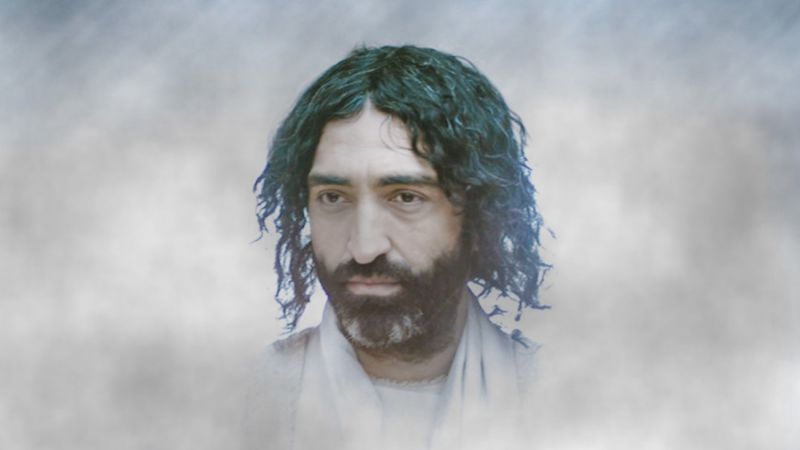The Lord your God will raise up for you a prophet like me [Moses] from among you, from your fellow Israelites. You must listen to him (Deuteronomy 18:15; 34:10).
The early followers of Jesus proclaimed that Jesus was the prophet Moses had promised (Acts 3:22; 7:37). God thundered on the Mount of Transfiguration and told Peter, James, and John that Jesus was God's Son, whom he loved, and they must listen to him (Matthew 17:1-5).
Jesus is the focus of God's story of redemption. We will focus on Jesus' life, words, and ministry presented in the Gospel of Matthew, the first book in the New Testament. Matthew presented Jesus as God's Son, Israel's King, and our teacher and Lord. Jesus descended from both Abraham and King David. He spoke with even higher authority than Moses because he was Immanuel, a name that means "God with us" (Matthew 1:23).
In today’s video, James shares insights about Jesus from the city of Jerusalem. He also talks about how the Bible is organized so that the focus is on Jesus:
The coming of Jesus was an incredible gift to the world of flawed and broken people. God had been gracious and sent his people all sorts of teachers, prophets, and spiritual leaders. When he sent Jesus, however, God came himself in Jesus the Son (Hebrews 1:1-3). When we read about Jesus' ministry, we see how God feels about all sorts of people - sinners, religiously arrogant, broken, grieving, debilitated, forgotten, insiders, outsiders, and those hungry for God (John 1:14-18). As we read about Jesus' life, words, and ministry, we get to know God!

As Matthew framed his story of Jesus, he carefully emphasized several things we need to know about Jesus as God walking among people.
First, Matthew connected Jesus to the great story of God's work among his Jewish people. The first section of his account of Jesus (Matthew 1:1-4:16 - The Background of Jesus Christ, Son of God) showed his connections with God's Old Testament story of redemption. This story began with God's promise to send a Son to destroy the devil's hold on people (Genesis 3:15; cf. Galatians 4:4). God called Abraham to be the recipient of his divine promise and to be the one through whom God would bless all nations (Genesis 12:1-3).
Jesus descended from the line of Abraham and David. He was the descendant promised to Abraham, who would bring God's blessings to all people (Genesis 26:4; Matthew 1:1-17). As son of David and Son of God (Matthew 4:3, 6; 8:29; 14:33; 16:16; 21:9, 15; 26:63-64; 27:40, 43; 27:54), Jesus was worthy of the title, "King of the Jews" (Matthew 2:2; 27:11, 29, 37). Jesus fulfilled what the prophets foretold (Matthew 1:22; 2:15, 17, 23; 3:15; 4:14 and many others). Jesus came as God's promised King and Messiah!
Matthew also recalled for us several women who were Gentiles who were part of Jesus' family tree (Matthew 1:3-6). God had planned on blessing all people through Jesus, the son of Abraham - men and women, Jews and Gentiles, slave and free (Genesis 12:1-3; cf. Galatians 3:26-29). Matthew told us about the magi at the very beginning of Jesus' story. These non-Jews had discerned who Jesus was from their false religion and then came to welcome him as King of the Jews (Matthew 2:1-12). Later, as Matthew brought his story of Jesus' earthly ministry to a close, he told us that the Lord commanded his followers to make disciples of all nations (Matthew 28:18-20).
From beginning to end, Matthew wanted his readers to know that Jesus gave his messages, miracles, and salvation to all people. Matthew wants us to know that Jesus is the Jewish Messiah, Israel's King, God's Son, as well as the world's Lord.
Matthew also emphasized through his collection of Jesus' teaching that just as Moses gave us the five books of the Torah, the Lord as the prophet like Moses brought us five blocks of truth that we must learn and obey (Chapters 5-7, 10, 13, 18, 23-25).
However, Matthew wanted his readers to know that Jesus was more significant than Moses. Jesus challenged God's people to go deeper into the heart of God's intent in the Torah (Matthew 5:17-20, 48). Jesus referred to what Moses had taught, then emphasized the more profound truth he wanted his followers to obey (Matthew 5:21-22, 27-28, 31-32, 33-34, 38-39, 43-44). Jesus called his followers to both know and do what he as Lord had authoritatively taught them (Matthew 7:21-29; 28:18-20). When challenged, he condensed the four hundred plus commands of Moses in the Torah down to two divine principles: love God with all we are and love our neighbor as we love ourselves (Matthew 22:36-42).

Matthew also insisted that Jesus was far more than a great teacher who brought us God's truth. He reminds us that Jesus was Immanuel, God's presence with people (Matthew 1:23). As God with us, Jesus demonstrated his mighty power to bless, save, rescue, free, deliver, and heal people oppressed. He freed those imprisoned by their fragile mortality and the destructive power of Satan. Not only was Jesus powerful to save, but Matthew wanted his readers to realize that Jesus' tenderness with people showed God's gracious compassion. Just as Moses redeemed God's people from Pharaoh's tyrannical grip, so also Jesus redeems people from every sort of affliction and oppression.
As we find our story caught up in God's story in Jesus, we want to encourage you to read through the Gospel of Matthew this next month. Ask the Holy Spirit to help you get to know Immanuel as God, who longs to be with us. As you read one chapter each day, ask the Holy Spirit to help you answer three questions:
- Jesus, what do you want me to know about you today?
- Jesus, how do you want me to feel about what I see in your life, words, and ministry, today?
- Jesus, help me know what you want me to do in my life based on what you have shown me today!
Blessings to you as you seek to live for Jesus!
Please remember that when Moses went up on the mountain to receive God's Law, God's finger wrote the original Ten Commandments on tablets of stone. When Jesus went up on Golgotha Hill, he revealed God's love for us. He didn't write God's love on tablets of stone, but in blood with the nail marks on his hands and feet. Such is God's great love for us: he came to us as Immanuel, God with us, in Jesus of Nazareth!

Special thanks for the use of the Jesus images in Phil's posts, "The Jesus Window," to Free Bible Images and The Lumo Project.











Comments
Have thoughts on this article? Leave a comment